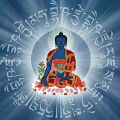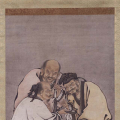Welcome home! Please contact lincoln@icrontic.com if you have any difficulty logging in or using the site. New registrations must be manually approved which may take several days. Can't log in? Try clearing your browser's cookies.
The Dream of Constant Okayness (Pema Chödrön)
 Sile
Veteran
Sile
Veteran
"It’s not impermanence per se, or even knowing we’re going to die, that is the cause of our suffering, the Buddha taught. Rather, it’s our resistance to the fundamental uncertainty of our situation. Our discomfort arises from all of our efforts to put ground under our feet, to realize our dream of constant okayness. When we resist change, it’s called suffering. But when we can completely let go and not struggle against it, when we can embrace the groundlessness of our situation and relax into its dynamic quality, that’s called enlightenment, or awakening to our true nature, to our fundamental goodness. Another word for that is freedom—freedom from struggling against the fundamental ambiguity of being human."
(From Pema Chödrön's Living Beautifully with Uncertainty and Change - and thanks to our friends at Shambhala Pubs for the always insightful Heart Advice of the Week!)
(From Pema Chödrön's Living Beautifully with Uncertainty and Change - and thanks to our friends at Shambhala Pubs for the always insightful Heart Advice of the Week!)
6







Comments
It's not only the five aggregates, but all dharmas are impossible to grasp. The buddhanature is also impossible to grasp. In fact the Buddha nature is what we are left with when we stop grasping.
Our Buddha-nature cannot be realized by the practice of not grasping at sensory things and mental constructs. The effort of non-grasping is, itself, a subtle form of grasping.
We come to realize our Buddha-nature as something positive which requires of us spiritual 'seeing' which is why, in the Mahaparinirvana Sutra, the Buddha speaks of "seeing" the Buddha-Nature by which one attains unsurpassed Enlightenment.
The Buddha also says: "The so-called Buddha-Nature is profound to know; it is hard to see and attain."
And make no mistake, wars are being fought over this, over the fear of letting go, of weightlessness, of floating away like a bubble to whatever fresh hell we anticipate. That's what doctrinal disputes are really about. Fear of emptiness. But emptiness is empty too.
Do you see what that means? That emptiness is empty? I can't say it in words. But I can feel it burst my heart like rain.
I'm sorry for the overblown poetry, it's just this convoluted brain translating. I'll get better at this.
Mostly when people write they are writing to an audience. As a friend of mine who writes and gets paid for it says ... " if it spoke to you then I am glad, please tell my boss as he is the one paying me " . Writers such as Pema are not motivated by $$$.
May I ask what you mean by all ? All teachers today?
Looking at the 12 fetters (nidâna), given the fact that the fetter of consciousness (the transmigrant) is before nâmarûpa (the five aggregates), which is laden with karmic formations (sankhârâ), which arise through ignorance (avijjâ)—voila!—we have the recipe for rebirth and more rebirth followed by still more rebirth.
To recap: Our consciousness, due to karmic formations and spiritual ignorance, takes up an embryo (nâmarûpa). This embryo is the five aggregates of suffering. By continuously clinging to them, we (as consciousness) suffer. On the other hand, if we transcend the five aggregates (which are conditioned) by seeing the unconditioned (nirvana) suffering comes to an end.
While it's true that the aggregates are suffering, the specific cause of our (individual) suffering is our (individual) clinging to them.
Those who cease clinging cease suffering, even though the possibility of suffering still exists for those who continue to cling.
I.e. @songhill, she says exactly what you say--that clinging to the aggregates is the cause of our suffering. If we didn't cling to them, we wouldn't suffer, despite the fact that the aggregates themselves remain a basis for suffering.
I think you could say it's similar to poison; poison is still poison, but if you don't cling to the poison, you won't suffer from the poison.
Generally people teaching in the west tailor their message for a western audience.
could U please explain the difference between form and the perception?
This all suggests that by following the ariya eightfold path we, as sotapanna, get weaned off the five aggregates booze. It is a gradual process, in other words. By seeing nirvana more and more, less and less do we glom onto the the aggregates.
instead of searching through written works or given talks, if U investigate the above question with your own capacity of understanding, surely 'a window' will open
find the door and walk out is the next step to be taken